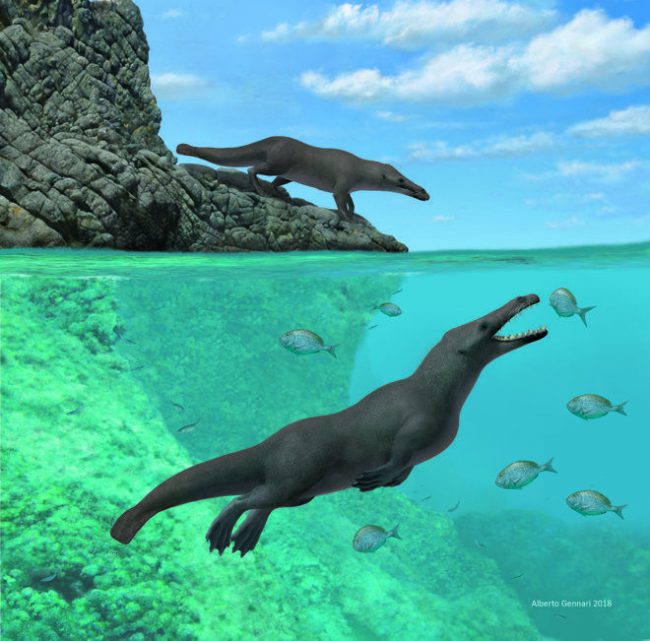Whales are among some of the most fascinating creatures on the planet. Why?
As you may have heard, life on Earth originated in the waters. It began slowly, with multi-cellular creatures growing into bizarre invertebrates, worms, mollusks, and eventually fish. Somewhere along the line, an ancient fish-like beast made a world-changing step. It left the water, and adapted to life on land. It's a bold move that led to everything from dinosaurs to house cats to, well, us.
Whales on the other hand? They reversed that trend. Their ancestors were mammals who said, "You know what? We're going back into the water!"
Pacific proof
This fossil was found in Peru, and was the first of its kind in this part of the world. (Getty Embed)
But how do we know that whales didn't evolve from animals that had always lived in water? For one, they breathe air, which clearly connects them to land-based creatures (the first air-breathing animals).
But beyond that fact, proof also exists in the fossil record. We have seen skeletons with similar to modern whales that show creatures that are making that transition from land to water. The latest fossil example is Peregocetus pacificus, a 4-metre (13-foot) long whale ancestor that lived over 42 million years ago.
What is really exciting about this particular fossil though is where it was found: Peru. This tropical South American country hugs the Pacific Ocean coastline—and this is the first time that such a fossil has been found in this part of the world. It means that this kind of evolution was happening across the globe, which is pretty exciting.
You otter rhino it would become a whale
"Oh, Shep, you happy whale! You've got your granddad's teeth!" (Getty Embed)
So just what was this whale ancestor like? Descriptions have it something like a rhinoceros-sized otter... only with a toothy maw that kind of looks like an alligator's. When you think of the mouths of sperm whales or orcas, it's easy to see the family resemblance.
It had feet that were both webbed and hoofed (cool!) and a thick, muscular tail that also hints at the broad flukes of whales. This predator would've been stocky and strong on land, then smooth and agile in the water.
Almost makes us wonder why didn't these animals stay as an in-between species like today's otters. Surely that would've been a great way to live, right? But then again, it IS a big ocean out there. Guess they just evolved to explore it!
 "I'll just take that fish!" This incredible whale ancestor was equally at home on land and at sea. (Alberto Gennari)
"I'll just take that fish!" This incredible whale ancestor was equally at home on land and at sea. (Alberto Gennari)










that’s really cool!